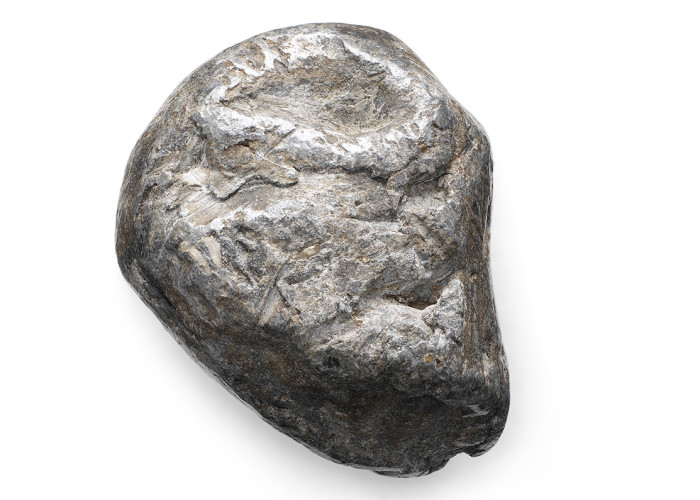Musketball that Killed Sir Thomas Picton
This musket-ball, or bullet, killed General Sir Thomas Picton at the Battle of Waterloo. It was shot through his head. The musket-ball is dented where it hit Picton’s skull.
This is a typical French lead musket ball, probably fired from a sturdy 1777 Charleville-type smooth bore musket, of which there were many varieties.
It was most likely fired from fairly close range during a strong French infantry assault on the Duke of Wellington’s Allied line around 1315-1330hrs on the 18 June. It entered Picton’s right temple, killing him instantly.
The balls (or bullets) were cast in a mould, occasionally in the field but usually by factories in France. They had a diameter of 0.7 inch, whereas the ‘Brown Bess’ musket balls were 0.76 inches in diameter. The French balls weighed just under an ounce and were contained in a tubular paper cartridge case, which could be rolled on a wooded rod (a mandrill) by soldiers themselves, or were supplied by the government.
Black (gun) powder was poured into the case, the base of which was sealed off. The ball was positioned at the top of the cartridge, which was also twisted off. A series of these cylindrical cartridges were placed in a cartouche or case, which was a flapped leather pouch slung over the soldier’s shoulder.
The soldier bit off the top of the cartridge, held the lead ball in his mouth and placed some powder in the pan of the flintlock. He then closed the cover of the pan (the frizzen). He poured the rest of the powder down the barrel of the musket, rammed or spat the ball down the barrel, cocked the flintlock and fired. This sent a spark through a small hole into the base of the barrel.
The effective range of the musket and ball was short in comparison to modern small arms, around 50-70% shots hitting a 100×6 foot target at 100 paces during one trial. Accuracy and effective discharge depended only slightly on aiming, and also on the quality of powder, fouling of the barrel, the proper ramming down of the ball and the gap between the smooth bored barrel and lead bullet (the ‘windage’). It usually took more than 200 shots to gain a ‘hit’.
-
Use this image
- Rights Holder: National Army Museum
- License Type: Creative Commons
Find it here
This object is in the collection of National Army Museum






